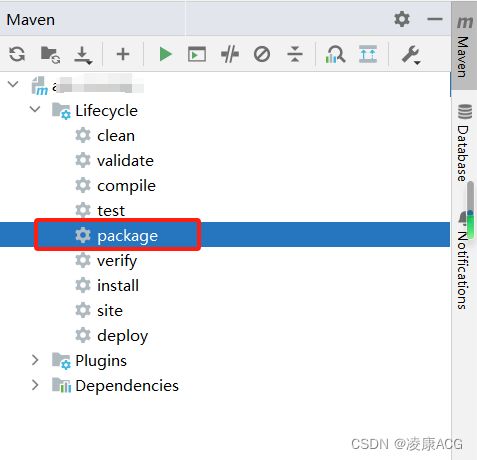Tomcat转SpringBoot、tomcat升级到springboot、springmvc改造springboot
Tomcat转SpringBoot、tomcat升级到springboot、springmvc改造springboot
起因:我接手tomcat-springmvc-hibernate项目,使用tomcat时问题不大。自从信创开始,部分市场使用国产中间件,例如第一次听说的宝兰德、东方通,还有一些市场使用weblogic、WebSphere;特别是商用中间件,难以满足本地运行并编写部署文档,只能靠市场自行摸搜适配。
那咋办?我直接把tomcat应用直接改造成springboot应用不就完事了,省去了中间件、中间商赚差价、虽然springboot底层用tomcat运行web,但没有了宝兰德、东方通的适配报错。
原项目:tomcat war+spring5+springmvc+hibernate+mysql
改造后:springboot+springbootweb+hibernate+mysql
添加依赖
第一步是添加springboot依赖
<packaging>jarpackaging>
<properties>
<project.build.sourceEncoding>UTF-8project.build.sourceEncoding>
<project.reporting.outputEncoding>UTF-8project.reporting.outputEncoding>
<spring.version>5.3.30spring.version>
<springboot.version>2.7.18springboot.version>
<hibernate.version>5.6.15.Finalhibernate.version>
properties>
<dependencies>
<dependency>
<groupId>org.springframework.bootgroupId>
<artifactId>spring-bootartifactId>
<version>${springboot.version}version>
dependency>
<dependency>
<groupId>org.springframework.bootgroupId>
<artifactId>spring-boot-starter-webartifactId>
<version>${springboot.version}version>
dependency>
<dependency>
<groupId>org.springframework.bootgroupId>
<artifactId>spring-boot-starter-freemarkerartifactId>
<version>${springboot.version}version>
dependency>
// 项目其他依赖
dependencies>
<plugin>
<groupId>org.springframework.bootgroupId>
<artifactId>spring-boot-maven-pluginartifactId>
<version>${springboot.version}version>
<configuration>
<excludes>
<exclude>
<groupId>org.projectlombokgroupId>
<artifactId>lombokartifactId>
exclude>
excludes>
<mainClass>app.MyApplicationmainClass>
configuration>
plugin>
原来是spring5.3.x,对应springboot2.7.x
转化web.xml
1、编写一个MyApplication
@SpringBootApplication(
exclude = {
RedisAutoConfiguration.class, SpringDataWebAutoConfiguration.class
},
scanBasePackages = {"app", "cn.com.xxxxx"}
)
@ImportResource({"classpath:spring.xml", "classpath:spring-ds.xml", "classpath:spring-validator.xml"})
@Slf4j
public class MyApplication {
public static void main(String[] args) {
ConfigurableApplicationContext context = SpringApplication.run(MyApplication.class, args);
String port = context.getEnvironment().getProperty("server.port");
if (port==null)
port="8080";
log.info("web: {}", "http://localhost:" +port);
}
}
特别注意,使用 @ImportResource 导入原有的xml配置还有包扫描路径 scanBasePackagesMyApplication 所放的位置有讲究,通常放到包的根目录下
2、创建一个 src/main/resources/application.properties
spring.main.allow-bean-definition-overriding=true
spring.main.allow-circular-references=true
spring.jpa.open-in-view=false
server.servlet.context-path=/app
允许bean循序、bean重写、web访问上下文路径
3、将web.xml中的 filter/Listener转化为bean
//使用RegistrationBean方式注入Listener
@Bean
public ServletListenerRegistrationBean servletListenerRegistrationBean() {
AppSessionListener myListener = new AppSessionListener();//创建原生的Listener对象
return new ServletListenerRegistrationBean(myListener);
}
//使用RegistrationBean方式注入Listener
@Bean
public ServletListenerRegistrationBean servletListenerRegistrationBean2() {
AppServletContextListener myListener = new AppServletContextListener();//创建原生的Listener对象
return new ServletListenerRegistrationBean(myListener);
}
其他的就不多赘述
静态文件转发
tomcat应用的静态文件通常放在app/WebContent下
例如app/WebContent/js/app.js,我们需要将它挂载到静态路径下:
/**
* @author lingkang
* created by 2023/12/8
*/
@Slf4j
@Configuration
public class StaticSourceConfig implements WebMvcConfigurer {
/**
* 部署本地资源到url
*
* @param registry
*/
@Override
public void addResourceHandlers(ResourceHandlerRegistry registry) {
File file = new File(System.getProperty("user.dir") + File.separator + "WebContent");
String path = file.getAbsolutePath();
if (!path.endsWith("/"))
path=path+File.separator;
log.info("静态文件映射路径:{}", path);
registry.addResourceHandler("/**")
.addResourceLocations("file:" + path);
}
}
打包
基于上面的,基本告一段落了,在没有移动前端资源的情况,同时我们的老项目有那么多xml配置,不可能将它打包到jar里,否则不符合修改迁移。这时候就要用到maven-assembly-plugin插件了,pom.xml配置如下:
<plugin>
<groupId>org.apache.maven.pluginsgroupId>
<artifactId>maven-compiler-pluginartifactId>
<version>3.5.1version>
<configuration>
<source>1.8source>
<target>1.8target>
<encoding>UTF-8encoding>
<compilerArgs>
<arg>-parametersarg>
<arg>-extdirsarg>
<arg>${project.basedir}/WebContent/WEB-INF/libarg>
compilerArgs>
configuration>
plugin>
<plugin>
<groupId>org.apache.maven.pluginsgroupId>
<artifactId>maven-assembly-pluginartifactId>
<version>3.6.0version>
<configuration>
<appendAssemblyId>falseappendAssemblyId>
<descriptorRefs>
<descriptorRef>jar-with-dependenciesdescriptorRef>
descriptorRefs>
<archive>
<manifest>
<mainClass>app.MyApplicationmainClass>
manifest>
archive>
<descriptors>
<descriptor>${project.basedir}/src/main/resources/package/package.xmldescriptor>
descriptors>
configuration>
<executions>
<execution>
<id>make-assemblyid>
<phase>packagephase>
<goals>
<goal>singlegoal>
goals>
execution>
executions>
plugin>
src/main/resources/package/package.xml配置如下
<assembly xmlns="http://maven.apache.org/ASSEMBLY/2.0.0"
xmlns:xsi="http://www.w3.org/2001/XMLSchema-instance"
xsi:schemaLocation="http://maven.apache.org/ASSEMBLY/2.0.0 http://maven.apache.org/xsd/assembly-2.0.0.xsd">
<id>releaseid>
<formats>
<format>dirformat>
formats>
<fileSets>
<fileSet>
<directory>${basedir}/src/main/resourcesdirectory>
<outputDirectory>configoutputDirectory>
<includes>
includes>
fileSet>
<fileSet>
<directory>${basedir}/src/main/resources/packagedirectory>
<outputDirectory>outputDirectory>
<fileMode>755fileMode>
<lineEnding>unixlineEnding>
<includes>
<include>*.shinclude>
includes>
fileSet>
<fileSet>
<directory>${basedir}/WebContent/WEB-INF/libdirectory>
<outputDirectory>liboutputDirectory>
<includes>
<include>*.jarinclude>
includes>
fileSet>
<fileSet>
<directory>${basedir}/WebContentdirectory>
<outputDirectory>WebContentoutputDirectory>
<includes>
<include>compressor/**include>
<include>conf/**include>
<include>dependence/**include>
<include>elementui/**include>
<include>fonts/**include>
<include>icons/**include>
<include>image/**include>
<include>img/**include>
<include>module/**include>
<include>nodejs/**include>
<include>script/**include>
<include>*.jsinclude>
<include>*.htmlinclude>
<include>*.cssinclude>
<include>*.jsoninclude>
includes>
fileSet>
fileSets>
<dependencySets>
<dependencySet>
<outputDirectory>liboutputDirectory>
dependencySet>
dependencySets>
assembly>
/src/main/resources/package/start.sh运行内容如下
#!/bin/bash
# ----------------------------------------------------------------------
#
# 使用说明:
# 1: 该脚本使用前需要首先修改 MAIN_CLASS 值,使其指向实际的启动类
#
# 2:使用命令行 ./start.sh start | stop | restart 可启动/关闭/重启项目
#
#
# 3: JAVA_OPTS 可传入标准的 java 命令行参数,例如 -Xms256m -Xmx1024m 这类常用参数
#
# 4: 函数 start() 给出了 4 种启动项目的命令行,根据注释中的提示自行选择合适的方式
#
# ----------------------------------------------------------------------
# 启动入口类,该脚本文件用于别的项目时要改这里
MAIN_CLASS=app.MyApplication
if [[ "$MAIN_CLASS" == "app.MyApplication" ]]; then
echo "请先修改 MAIN_CLASS 的值为你自己项目启动Class,然后再执行此脚本。"
exit 0
fi
COMMAND="$1"
if [[ "$COMMAND" != "start" ]] && [[ "$COMMAND" != "stop" ]] && [[ "$COMMAND" != "restart" ]]; then
# echo "Usage: $0 start | stop | restart , 例如: sh start.sh start / sh start.sh stop"
# exit 0
COMMAND="start"
fi
# Java 命令行参数,根据需要开启下面的配置,改成自己需要的,注意等号前后不能有空格
JAVA_OPTS="-Xms512m -Xmx2048m "
# JAVA_OPTS="-Dserver.port=80 "
# 生成 class path 值
APP_BASE_PATH=$(cd `dirname $0`; pwd)
CP=${APP_BASE_PATH}/config:${APP_BASE_PATH}/lib/*
function start()
{
# 运行为后台进程,并在控制台输出信息
#java -Xverify:none ${JAVA_OPTS} -cp ${CP} ${MAIN_CLASS} &
# 运行为后台进程,并且不在控制台输出信息
# nohup java -Xverify:none ${JAVA_OPTS} -cp ${CP} ${MAIN_CLASS} >/dev/null 2>&1 &
# 运行为后台进程,并且将信息输出到 output.out 文件
nohup java -Xverify:none ${JAVA_OPTS} -cp ${CP} ${MAIN_CLASS} > nohup.out &
# 运行为非后台进程,多用于开发阶段,快捷键 ctrl + c 可停止服务
# java -Xverify:none ${JAVA_OPTS} -cp ${CP} ${MAIN_CLASS}
}
function stop()
{
# 支持集群部署
kill `pgrep -f ${APP_BASE_PATH}` 2>/dev/null
# kill 命令不使用 -9 参数时,会回调 onStop() 方法,确定不需要此回调建议使用 -9 参数
# kill `pgrep -f ${MAIN_CLASS}` 2>/dev/null
# 以下代码与上述代码等价
# kill $(pgrep -f ${MAIN_CLASS}) 2>/dev/null
}
if [[ "$COMMAND" == "start" ]]; then
start
elif [[ "$COMMAND" == "stop" ]]; then
stop
else
stop
start
fi
mvn package
然后将整个路面打包成zip传到服务器运行即可

